Last week’s Greenwall Project of the Week (GPW) was the beautiful YVR Canada Line Station 4 Living Wall, located at the Vancouver International (YVR) Airport’s SkyTrain station. The first Canadian airport to install a greenwall, international visitors to this beautiful city are greeted by the living tapestry, just one of the sustainable initiatives and ecological solutions for the airport. Since YVR is situated within the estuary of the Fraser River on Sea Island, a large conservation project was created here to offset the environmental impact the airport causes, including a wildlife preserve and public beaches.
Inaugurated early in August 2009, months in advance of the Vancouver 2010 Olympic and Winter Paralympics, the $1.9 billion (CAD) Canada Line is a rail-based rapid transit line linking central Richmond, Canada, the Vancouver International Airport and downtown Vancouver, B.C. The Canada Line terminus at YVR-Airport Station is linked by a bridge to an award-winning $125-million (CAD), five-story steel and glass structure known as the Link. Connecting to both the international and domestic terminals, the Link’s signature oval structure provides a unique visual connection to the land, sea and sky that surround the airport.
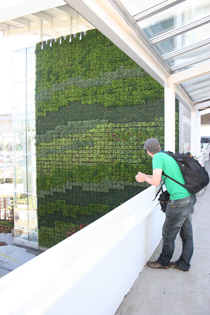 Designed to eliminate visual interference, the YVR Canada Line Station 4 station sits 60 feet high straddling a road. Both the YVR Station and the Link were designed by Kasian Architecture with Read Jones Christoffersen as structural engineers, and Sharp Diamond Landscape Architecture was brought in to design the massive green wall and other features.
Designed to eliminate visual interference, the YVR Canada Line Station 4 station sits 60 feet high straddling a road. Both the YVR Station and the Link were designed by Kasian Architecture with Read Jones Christoffersen as structural engineers, and Sharp Diamond Landscape Architecture was brought in to design the massive green wall and other features.
One of the largest living walls in North America (the largest at the time in 2009), it measures 17.0m high and 11.6m wide (about 55.8 feet x 38 feet), and houses a total of 27,391 individual plants! Landscape architect Randy Sharp used a modular system by G-Sky, a B.C. based company, for this living wall that encompasses 2,107 stainless steel panels. His design concept stresses the connection of the vegetated wall to the rapid transit station to the ground.
Randy was also involved with the Landscape Master Plan for the Vancouver International Airport and its unique ecological environment. He says his overall vision for the Grant McConachie Way corridor, which leads into YVR, was to serve as a natural gateway linking Vancouver to B.C., Canada, and the world beyond. Drawing upon the estuary thematics of Sea Island, he desired the landscape experience to feature a four-season effect in a bold design that would grow and evolve over time. Highlights include major tree and shrub planting to enhance view corridors, other landscape designs for various Canada Line Stations, the ongoing development of a multi-use trail system for Sea Island, and a gateway feature signage program.
“Green facades and living walls provide an exciting fresh canvas for landscape architects and designers to be creative. These vertical landscapes provide as yet unexplored opportunities for biodiversity, greywater treatment, urban agriculture and energy performance, not to mention the creation of green collar jobs.” ~ Randy Sharp
But the stunning greenwall isn’t the only green element here – two greenroofs, one extensive and the second intensive – are also featured. First Nations art inside and outside the terminal grace the property, too, and enhance the sense of place.
Randy has designed and installed another of metro Vancouver’s most significant living walls, the Aquaquest, the Marilyn Blusson Learning Centre, Vancouver Aquarium – the first modular living wall in North America, as well as many greenroofs, too. In fact, he and his company have received multiple awards in design excellence for both greenroofs and walls.
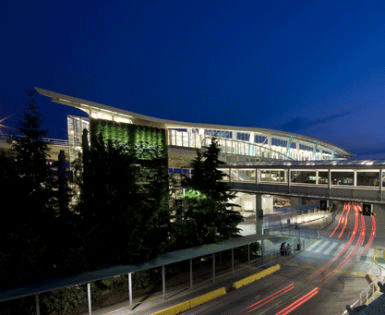
There’s been a lot of public commentary (and pride) about the green design of YVR Canada Line Station 4’s living wall, particularly in the blogosphere. While not everyone appreciates the environmental benefits of greenwalls, everyone loves the aesthetics. Responding to a blog post last summer in Price Tags, John Wilson retorted:
“This specific green wall sends a message to everyone visiting Vancouver (and Canada). That message is that we’re a progressive cosmopolitan city that cares about the world and the environment, and we’re open to using new methods and technologies because we’re also big on innovation. We’re a player in the world. Interesting things are happening here.”
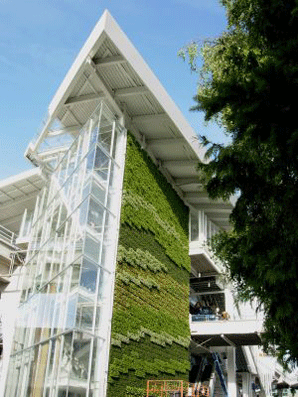 Vancouver, B.C., is indeed a progressive, green city that’s always included at the top of the world’s most livable cities. The Vancouver Airport Authority also maintains a Public Observation Area here where people of all ages can see take-offs and landings and learn about the area’s unique ecology and history, too, with all sorts of hands-on activities. See a video about it here.
Vancouver, B.C., is indeed a progressive, green city that’s always included at the top of the world’s most livable cities. The Vancouver Airport Authority also maintains a Public Observation Area here where people of all ages can see take-offs and landings and learn about the area’s unique ecology and history, too, with all sorts of hands-on activities. See a video about it here.
Next time you’re at YVR, check out their new green wall at Canada Line Station 4. According to locals, the best views are from the parkade bridge connecting the International Terminal at Departures level 3, or from Chester Johnson Park, International Terminal Arrivals level 2.
~ Linda V.
 Greenroofs.comConnecting the Planet + Living Architecture
Greenroofs.comConnecting the Planet + Living Architecture

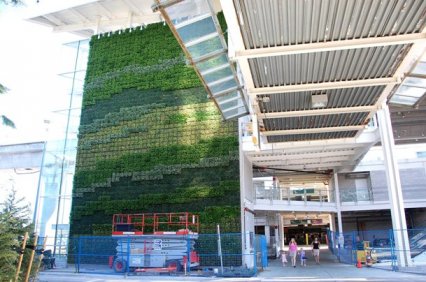
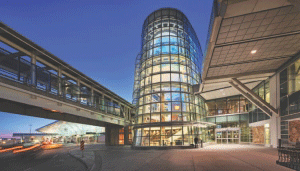
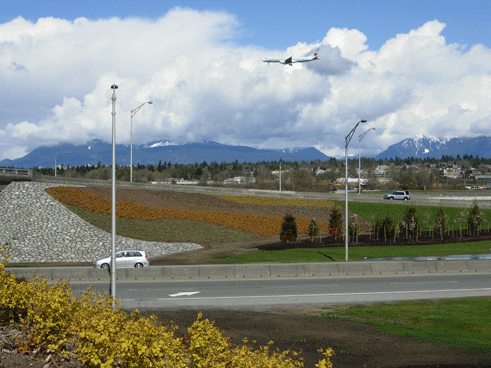
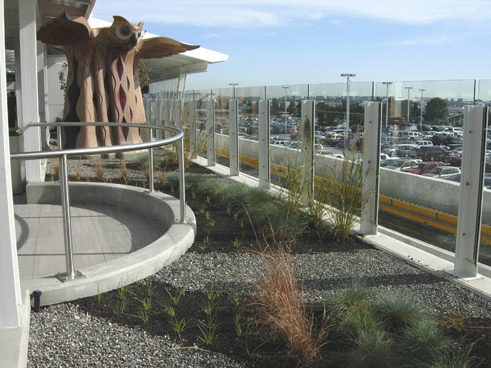

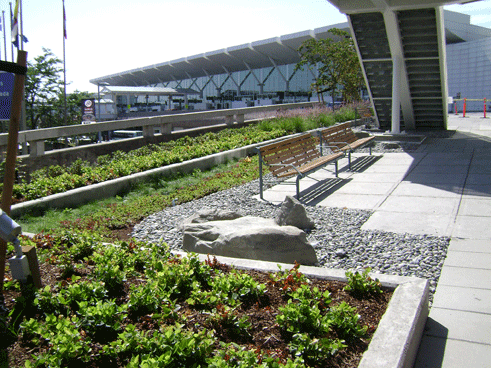

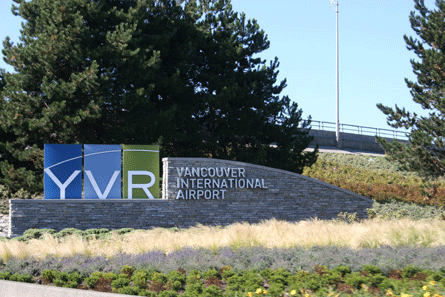





Final Reflections of Fall 2010 Greenroof Conferences: Vancouver, BC, Part 3 | Archi-tecture.com
[…] Not content to leave things alone, upon leaving the Vancouver International Airport (YVR), I had to take a bunch of photos of the 17-meter high YVR Canada Line Station 4 Living Wall, designed by the talented Randy Sharp of Sharp Diamond Landscape Architecture.  As you may know, the Canada Line is Vancouver’s new rapid transit rail link connecting YVR to downtown Vancouver, and visitors are greeted by this beautiful green wall of green and silver euonymus, mondo grass, and licorice fern. Read my 3.26.10 Sky Gardens post about it here. […]